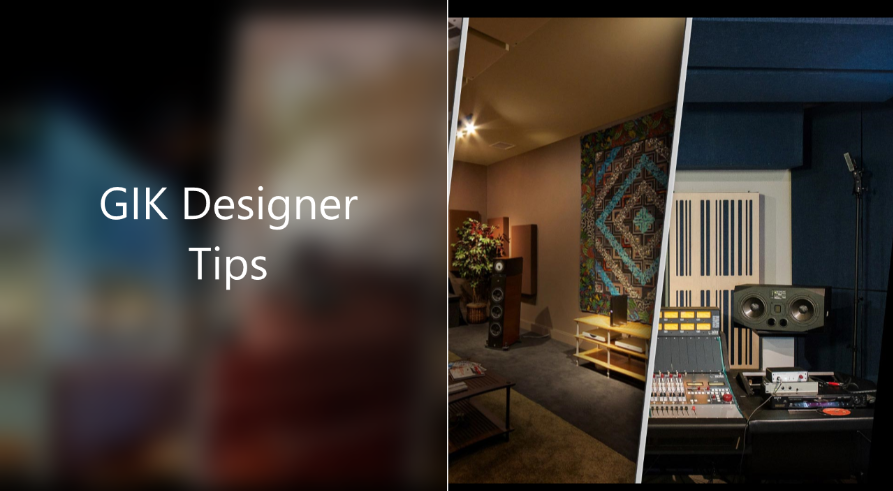When people reach out to us at GIK for acoustic advice, we never have any problem convincing people to put panels and diffusors on their wall and in their corners in their quest for better sound. This is what everyone expects. But frequently, when we mention treating the ceiling we are met with “oh…I can’t do that. I don’t want to make huge holes in my ceiling. Is it really that important?”
In a word: yes. Ceiling clouds are often the missing link in an otherwise well-treated room. There are many misconceptions and misunderstandings about clouds that influence people’s judgment about their impact on the sound of a room so it would be helpful to understand more about them and what they do.
The first misconception about the necessity of clouds is thinking that the ceiling is different from the sidewalls (or any other reflective structural surface for that matter). While most speakers do a pretty good job of controlling the dispersion in the vertical plane, there is still quite a bit of energy making its way to the ceiling. These reflections cause the same kinds of problems that the sidewall reflections will cause: blurry image and lack of clarity, comb filtering, inconsistent frequency response and general “bloat” in the low midrange. These problems must be addressed in this specific area and cannot be offset with more treatment somewhere else.
The second misconception is assuming that the reflections are limited to a small area on the ceiling as if sound only travels in a perfectly straight line, like a small beam of light. While we do recommend using “the mirror trick” to find your first reflection points, it’s never quite this simple. Sound does travel more like light at higher frequencies (see fig 1) but as the frequency gets lower, the speaker’s dispersion gets wider (see fig 2 and fig 3) eventually becoming omnidirectional at low frequencies. In these lower frequencies with wider dispersion, the size of the cloud becomes very important. We can’t just put a postage stamp of treatment at the exact high frequency reflection point because that ignores a huge part of the spectrum and the surface area from which it will reflect. The larger the cloud can be, the better. I prefer it to be at least as wide as the speakers, if not wider to help clean up more of the low mid “muck” (see fig 4 and fig 5).
Without these ceiling treatments, not only will the sound suffer from image and “height” problems, there will also be a noticeable “bump” in frequency response somewhere between 110Hz-160Hz. These problem frequencies coincide with a typical ceiling height in most rooms, between about 10.25 feet (110.24Hz) and 7.06 feet (160Hz). The problems occur with higher ceilings too, but the frequency response anomalies are more exaggerated with lower ceilings.
Our last misconception is that the thickness of the cloud is not important. Most people are OK putting a 1” or 2” panel on the ceiling but are less accepting of something thicker like our 244 or Monster Bass Trap. This goes back to the trepidation about hanging stuff on the ceiling and how obtrusive a thick panel may look on the ceiling. Going with thinner panels like the 242, the Spot Panel or even the 1” Razor is going to do fine at reducing and eliminating mid and high frequency reflections, but it will not affect the low mids or bass—and you will be left with this “bump” in the low midrange that cannot be solved by any other means. Certainly, in a room with a low ceiling there is no choice but to use something thinner but it’s important to use the thickest panel you can fit (or that you can stand).
Even though all of this pertains to the area above the desk (or in front of the speakers in a listening room or home theater), adding clouds anywhere else in the room is going to help. As James said in his tip, more coverage is always better than less coverage, and this is especially true at lower frequencies. The more the merrier!
For advice on your specific space, check out our Room Advice form to get in contact with one of our Designers, who will be happy to answer any questions you have!

Mike Major has been a recording engineer for over 35 years during which time he became fascinated with acoustics and trying to achieve “better sound”. Mike is also the author of the book “Recording Drums: The Complete Guide”. He has been an acoustics professional for eight years and has been working for GIK since 2018.






Share:
Designer Tips: The Importance of Coverage Area with James Lindenschmidt
DIFFUSION Concepts Explained